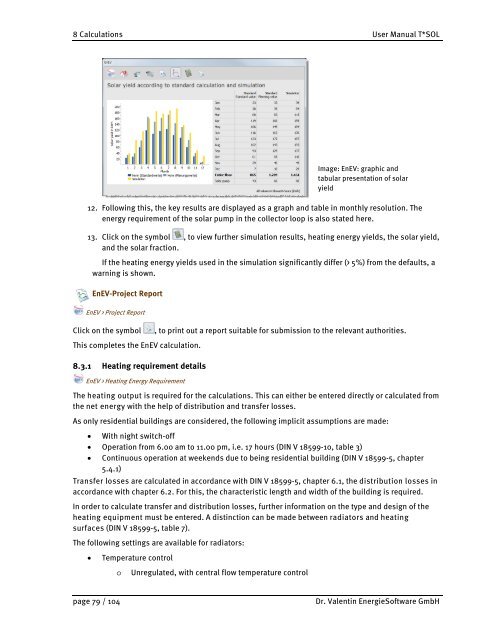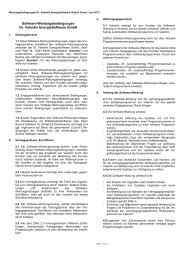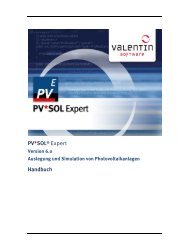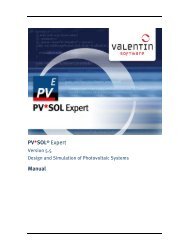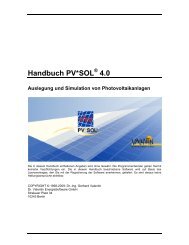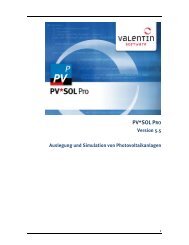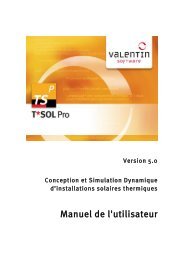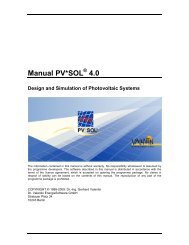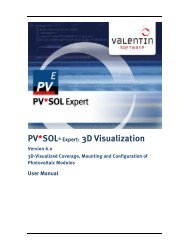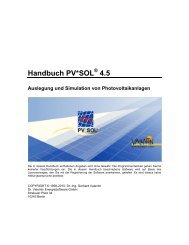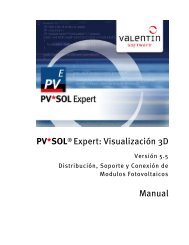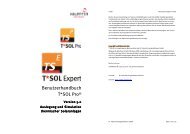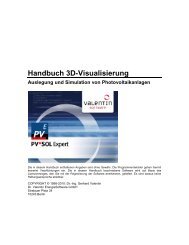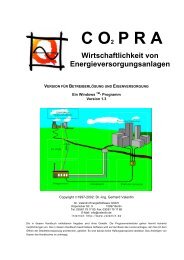Manual T*SOL basic 5.0 - Valentin Software
Manual T*SOL basic 5.0 - Valentin Software
Manual T*SOL basic 5.0 - Valentin Software
You also want an ePaper? Increase the reach of your titles
YUMPU automatically turns print PDFs into web optimized ePapers that Google loves.
8 Calculations User <strong>Manual</strong> <strong>T*SOL</strong><br />
Image: EnEV: graphic and<br />
tabular presentation of solar<br />
yield<br />
12. Following this, the key results are displayed as a graph and table in monthly resolution. The<br />
energy requirement of the solar pump in the collector loop is also stated here.<br />
13. Click on the symbol , to view further simulation results, heating energy yields, the solar yield,<br />
and the solar fraction.<br />
If the heating energy yields used in the simulation significantly differ (> 5%) from the defaults, a<br />
warning is shown.<br />
EnEV-Project Report<br />
EnEV > Project Report<br />
Click on the symbol , to print out a report suitable for submission to the relevant authorities.<br />
This completes the EnEV calculation.<br />
8.3.1 Heating requirement details<br />
EnEV > Heating Energy Requirement<br />
The heating output is required for the calculations. This can either be entered directly or calculated from<br />
the net energy with the help of distribution and transfer losses.<br />
As only residential buildings are considered, the following implicit assumptions are made:<br />
• With night switch-off<br />
• Operation from 6.00 am to 11.00 pm, i.e. 17 hours (DIN V 18599-10, table 3)<br />
• Continuous operation at weekends due to being residential building (DIN V 18599-5, chapter<br />
5.4.1)<br />
Transfer losses are calculated in accordance with DIN V 18599-5, chapter 6.1, the distribution losses in<br />
accordance with chapter 6.2. For this, the characteristic length and width of the building is required.<br />
In order to calculate transfer and distribution losses, further information on the type and design of the<br />
heating equipment must be entered. A distinction can be made between radiators and heating<br />
surfaces (DIN V 18599-5, table 7).<br />
The following settings are available for radiators:<br />
• Temperature control<br />
o Unregulated, with central flow temperature control<br />
page 79 / 104 Dr. <strong>Valentin</strong> Energie<strong>Software</strong> GmbH


